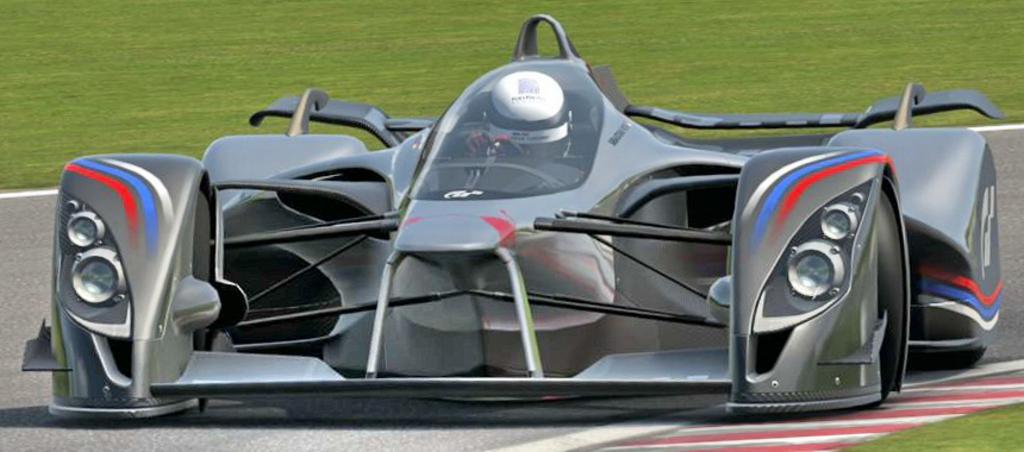MAKE A MEME
View Large Image

| View Original: | eX2014_LMR1.jpg (860x380) | |||
| Download: | Original | Medium | Small | Thumb |
| Courtesy of: | www.flickr.com | More Like This | ||
| Keywords: lmr1 fancar venturi groundeffect lowdrag suckercar x2014 chaparral2j bt46b electric drive electricdrive electric vehicle electricvehicle endurance land speed record landspeedrecord electric car electriccar state-of-the-art stateoftheart graphene zero emission zeroemission futureproof open systems architecture opensystemsarchitecture morphing h.o.s.h. hosh holger behn holgerbehn hidden pleasures hiddenpleasures malonda wheel optional wheeloptional sae level 5 saelevel5 autonomous car autonomouscar ⚙ sport auto racing outdoor 1S · 4WD · 500kg · 1,800hp · 8,470Nm · 650kph · 0-100kph 0.7s ♥ The first fan car ever built was the 1970 C2J. On the chassis' sides bottom edges there were ground-sealing articulated skirts, a technology that would later appear in the 1978 BT46B. At the rear of the C2J were housed 2 MBT engine fans driven by a single 2S2C engine. The C2J had a Lexan skirt extending to the ground on both sides, laterally on the back and from just aft of the front wheels; it was integrated with the suspension system so the skirt bottom would maintain a distance of 1" from the ground regardless of g-forces or anomalies in the road surface, thereby providing a zone within which the fans could create a partial vacuum which would provide 1.25–1.50 g of downforce on the fully loaded car, creating the same levels of low pressure under the car at all speeds and giving the "sucker car" much greater grip and maneuverability. Similarly, the air under the floor of the ÆX2014 æ-car is drawn out by the fan at the rear end, generating an extremely effective downforce regardless of the vehicle's current speed. Since this car relies mainly on such downforce for cornering, aerodynamics can be more streamlined, reducing the downforce needed from Venturi effect. As a result the drag forces are greatly reduced, raising the top speed considerably and offering a driving behaviour that is less affected by current speed. The difference in the way downforce is generated between conventional Venturi cars and fan cars is influenced by the difference in the speed variations when the downforce is applied on each of these cars: they are similar in high speed corners, but in chicanes and low speed corners, fan cars are significantly faster. 1S · 4WD · 500kg · 1,800hp · 8,470Nm · 650kph · 0-100kph 0.7s ♥ The first fan car ever built was the 1970 C2J. On the chassis' sides bottom edges there were ground-sealing articulated skirts, a technology that would later appear in the 1978 BT46B. At the rear of the C2J were housed 2 MBT engine fans driven by a single 2S2C engine. The C2J had a Lexan skirt extending to the ground on both sides, laterally on the back and from just aft of the front wheels; it was integrated with the suspension system so the skirt bottom would maintain a distance of 1" from the ground regardless of g-forces or anomalies in the road surface, thereby providing a zone within which the fans could create a partial vacuum which would provide 1.25–1.50 g of downforce on the fully loaded car, creating the same levels of low pressure under the car at all speeds and giving the "sucker car" much greater grip and maneuverability. Similarly, the air under the floor of the ÆX2014 æ-car is drawn out by the fan at the rear end, generating an extremely effective downforce regardless of the vehicle's current speed. Since this car relies mainly on such downforce for cornering, aerodynamics can be more streamlined, reducing the downforce needed from Venturi effect. As a result the drag forces are greatly reduced, raising the top speed considerably and offering a driving behaviour that is less affected by current speed. The difference in the way downforce is generated between conventional Venturi cars and fan cars is influenced by the difference in the speed variations when the downforce is applied on each of these cars: they are similar in high speed corners, but in chicanes and low speed corners, fan cars are significantly faster. | ||||